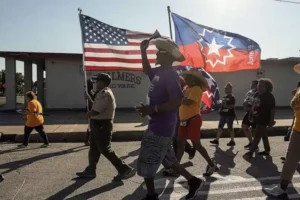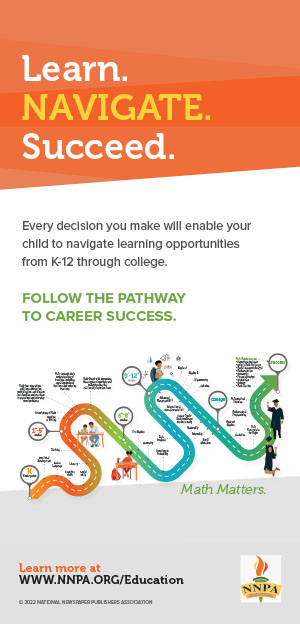The Lung Association’s State of the Air report also revealed that 72 million people of color live in counties that received at least one failing grade for ozone and particle pollution.
By Stacy M. Brown
NNPA Newswire Senior National Correspondent
@StacyBrownMedia
According to a report published this week by the American Lung Association, almost half of Americans – 137 million people – are experiencing more days of “very unhealthy” and “hazardous” air quality than in the previous two decades combined.
The Lung Association’s State of the Air report also revealed that 72 million people of color live in counties that received at least one failing grade for ozone and particle pollution.
More than 14 million dwell in areas where health officials doled out failing grades on all three measures.
The report looks at America’s exposure to two types of air pollution: ozone, also called smog, and particle pollution, commonly called soot. The American Lung Association has issued the State of the Air for 23 years using data analyzed from official air quality monitors.
Officials have pushed the motto that the more you learn about the air you breathe, the more you can protect your health and take steps to make the air cleaner and healthier. “We’ve seen much better air quality in most areas today than when we started the report. But over the last five years, we’ve seen an uptick, and we attribute a lot of that to climate change,” said Paul Billings, senior vice president of public policy for the American Lung Association.
“We’ve had some of the hottest years on record – creating dry conditions that lead to drought and wildfires,” Billings stated. State of the Air 2022 shows that an “unacceptable number of Americans are still living in areas with poor air quality that could impact their health,” said Harold Wimmer, National President and CEO of the American Lung Association. “More than 137 million Americans live in counties that had unhealthy levels of particle pollution or ozone. In addition, communities of color are disproportionately exposed to unhealthy air.”
The report also found that people of color were 61% more likely than white people to live in a county with a failing grade for at least one pollutant and 3.6 times as likely to live in a county with a failing grade for all three pollutants.
Other highlights from the report include:
• Some 72 million people of color live in counties that received at least one failing grade for ozone and/or particle pollution. Over 14 million people of color live in counties that received failing grades on all three measures, including nearly 10 million Hispanics.
• People experiencing poverty—More than 15.9 million people with incomes meeting the federal poverty definition live in counties that received an F for at least one pollutant. Over 2.6 million people in poverty live in counties failing all three measures.
• Children and older adults—Some 31 million children under age 18 and nearly 21 million adults age 65 and over live in counties that received an F for at least one pollutant. Almost 4.7 million children and 2.8 million seniors live in counties failing all three measures.
People with underlying health conditions.
• Asthma—2.3 million children and nearly 10 million adults with asthma live in counties that received an F for at least one pollutant. More than 320,000 children and 1.4 million adults with asthma live in counties failing all three measures.
• Chronic Obstructive Pulmonary Disease (COPD)—Over 6.1 million people with COPD live in counties that received an F for at least one pollutant. Almost 800,000 people with COPD live in counties failing all three measures.
• Lung Cancer—More than 66,000 people diagnosed with lung cancer in 2018 live in counties that received an F for at least one pollutant. And 7,400 people diagnosed with lung cancer live in counties failing all three measures.
• Cardiovascular Disease—More than 8 million people with cardiovascular disease live in counties that received an F for at least one pollutant. More than 1 million people live in counties failing all three measures.
• Pregnancy—Adverse impacts from air pollution have been shown both for those who are pregnant as well as for the developing fetus. More than 1.5 million pregnancies were recorded in 2020 in counties that received at least one F for particle pollution. Of those, 210,000 are in counties that received failing grades for all three measures.
The American Lung Association recommends that every federal agency, the White House, and Congress must immediately act to dramatically reduce air and climate pollution and drive an urgent nationwide transition to zero-emission transportation and electricity. They said 40% of the investments made to meet these goals must improve air quality, health, and life in underserved communities.
Additionally, local governments have the power to help ensure that city and county operations are zero-emission and that residents can choose zero-emission forms of transportation and electricity, the officials said.
The report’s authors noted that the actions must benefit the communities most impacted by unhealthy air.
Further, officials said individuals also could take action to protect themselves and their families from the dangers of air pollution.
“Regardless of its grade or ranking in this report, any community can experience days with unhealthy levels of air pollution,” the authors stated.
The following are some precautions to reduce risk:
• Check daily air pollution forecasts in your area at airnow.gov. The color-coded forecasts let you know when the air is unhealthy in your community. When the air is bad, move your exercise plans and other activities indoors.
• Protect yourself from wildfire smoke if you live in a fire-prone area. Learn more about using masks and creating a clean room inside your home with our wildfire resources at Lung.org/wildfire.
• Reduce your own contributions to air pollution. Prioritize walking, biking, and public transit over gasoline-powered vehicles. Conserve electricity and purchase your power from clean, non-combustion sources if you can. Don’t burn wood, leaves, or trash. Learn more about how to reduce your impact with our Stand Up For Clean Air initiative at Lung.org/air.










